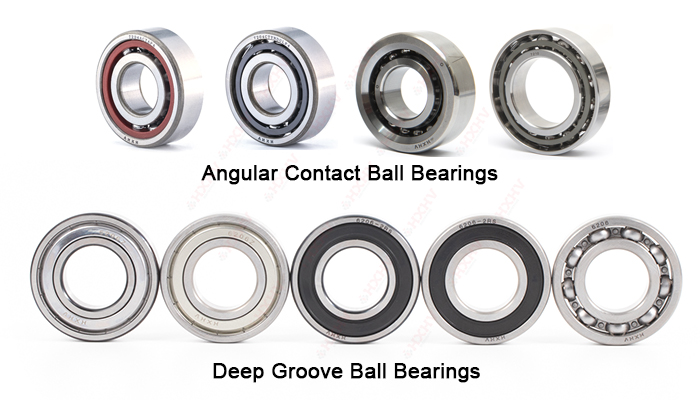Ball bearings are mechanical components that reduce friction and allow shafts and shafts to rotate smoothly. There are two main types of ball bearings: angular contact ball bearings and deep groove ball bearings. They differ in design, functionality and application.
Angular contact ball bearings have an asymmetric cross-section, and there are contact angles between the inner ring, outer ring and steel balls. The contact angle determines the axial load capacity of the bearing. The larger the contact angle, the higher the axial load capacity, but the lower the ultimate speed. Angular contact ball bearings can bear both radial and axial loads, and can be used in pairs to bear bidirectional axial loads. Angular contact ball bearings are suitable for high-speed, high-precision applications such as machine tool spindles, pumps and compressors.
Deep groove ball bearings have a symmetrical cross-section and a small contact angle between the inner and outer rings and the steel balls. The contact angle is usually around 8 degrees, which means the bearing can only bear a small axial load. Deep groove ball bearings can withstand high radial loads and moderate axial loads in both directions. Deep groove ball bearings are suitable for low noise and low vibration applications such as electric motors, conveyors and fans.
The main advantages of angular contact ball bearings over deep groove ball bearings are:
• Higher axial load capacity
• Better rigidity and accuracy
• Ability to handle combined loads
The main advantages of deep groove ball bearings over angular contact ball bearings are:
• Reduce friction and heat generation
• Higher speed limits
• Easier installation and maintenance
Post time: Feb-27-2024

